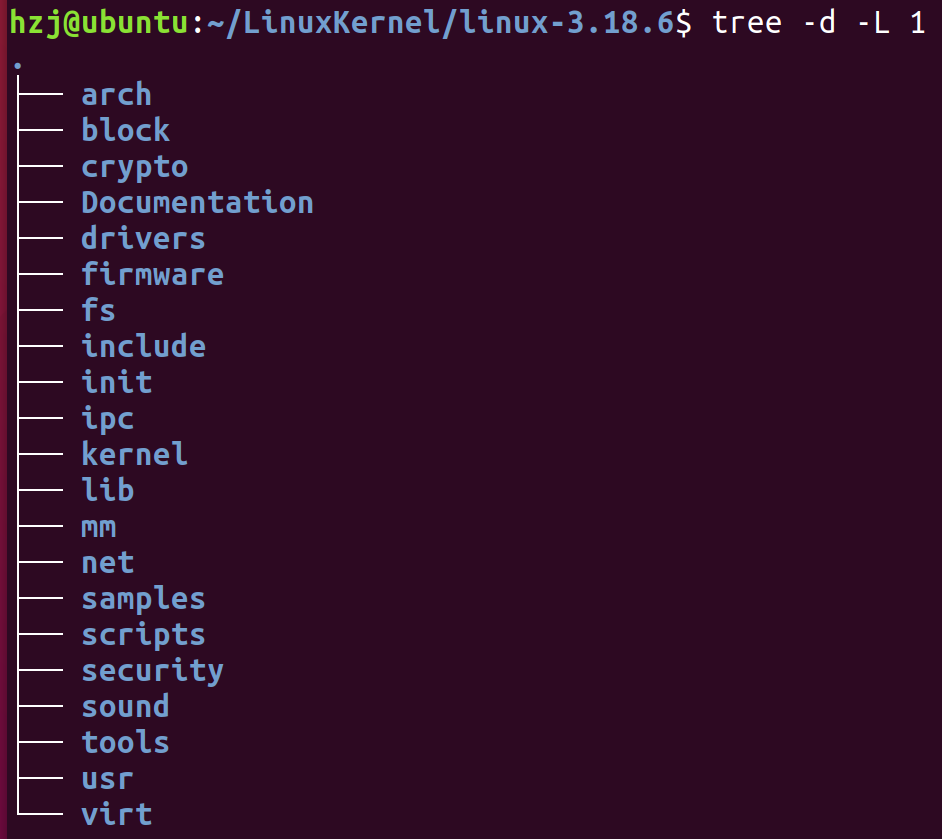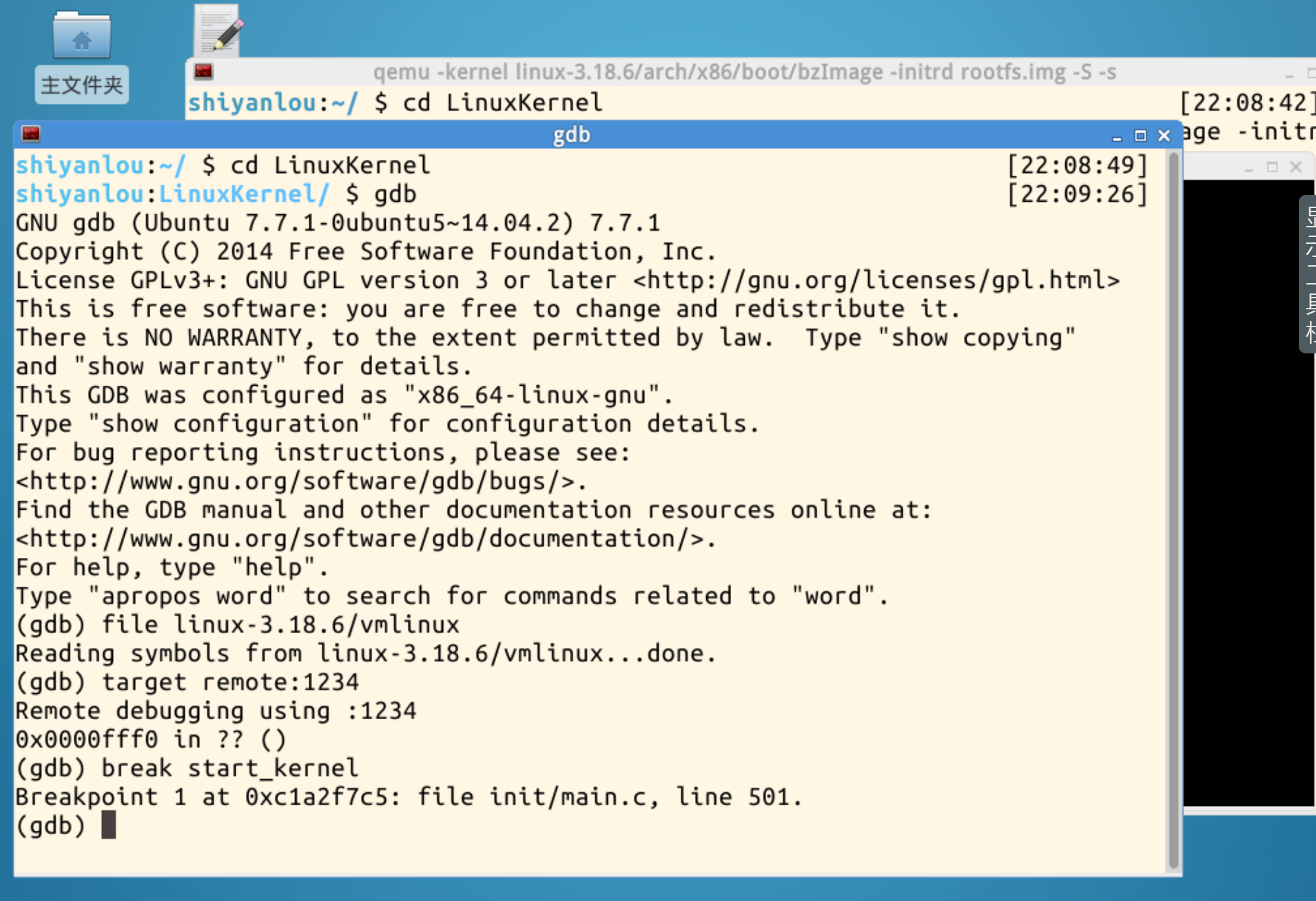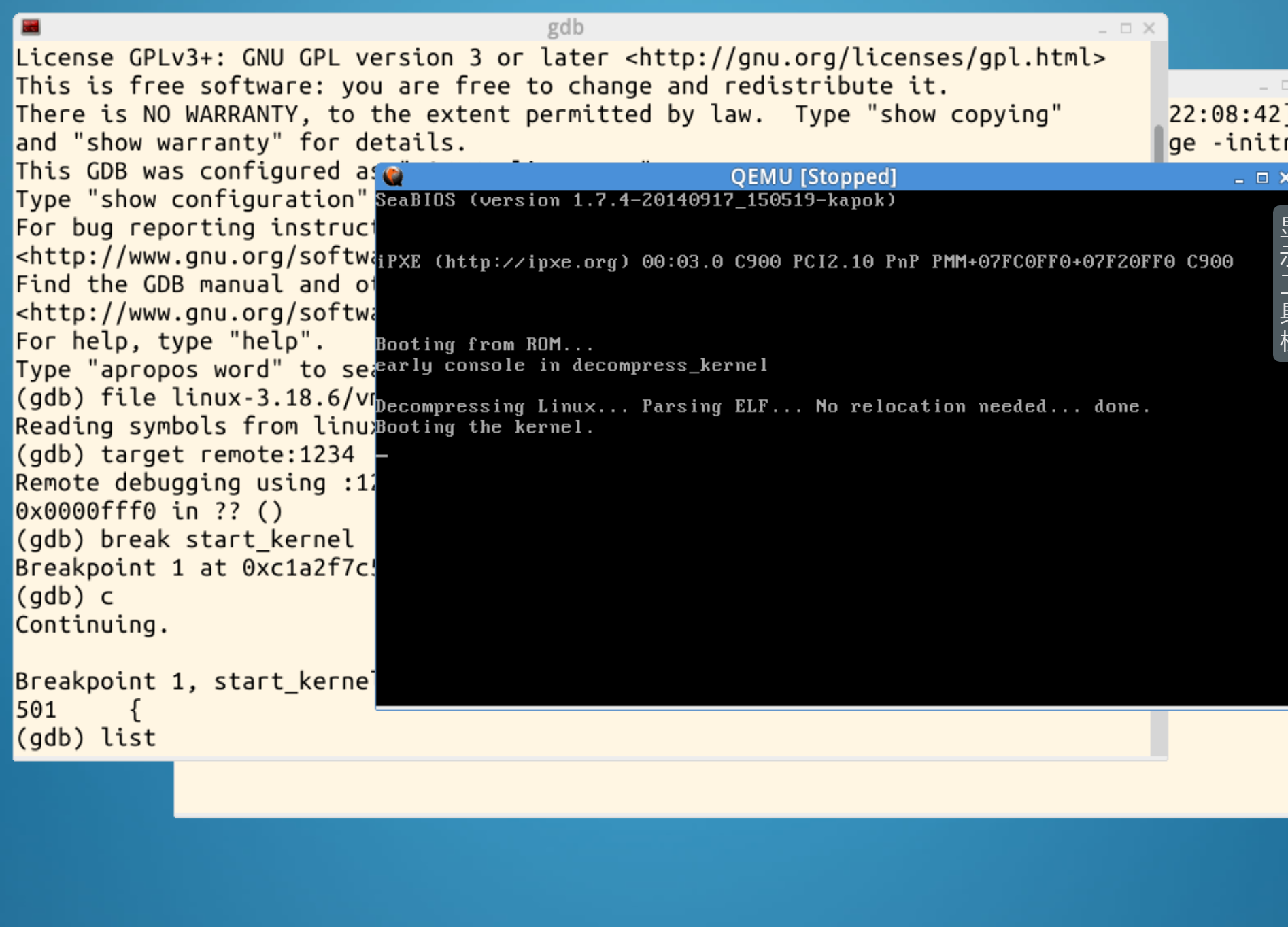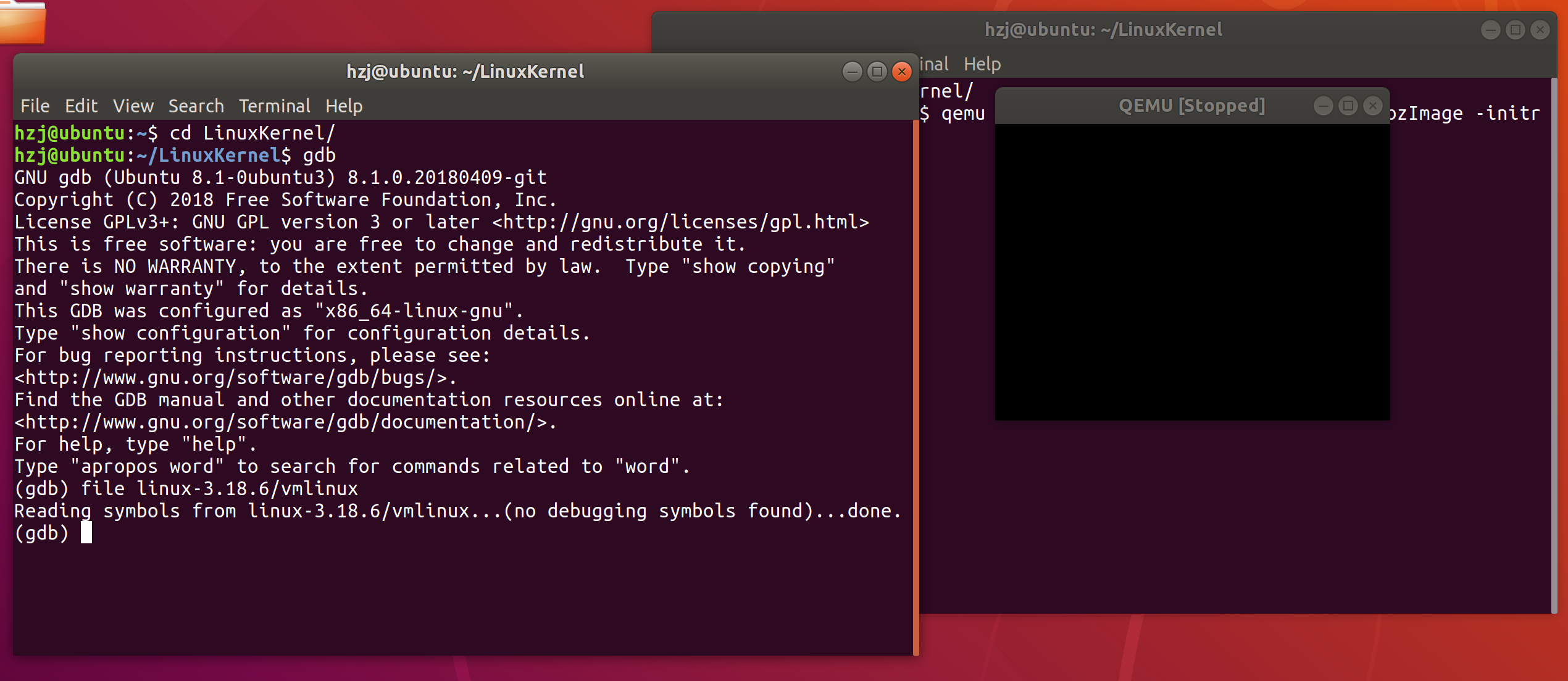2018-2019-1 20189205 《Linux核心原理與分析》 第四周作業
阿新 • • 發佈:2018-11-04
MenuOS的構造
Linux核心
本週學習了Linux核心的基本目錄結構,通過qemu構建了簡單的Linux核心,並利用gdb工具進行除錯,瞭解了核心的啟動過程。
- Linux的目錄結構

- 關鍵的目錄
arch:與體系結構相關的子目錄列表。
block:存放Linux儲存體系中關於塊裝置管理的程式碼。
crypto:存放常見的加密演算法的C語言程式碼。
documentation:存放一些文件。
drivers:驅動目錄,裡面分門別類地存放了Linux核心支援的所有硬體裝置的驅動原始碼。
firmware:韌體。
fs:檔案系統,裡面列出了Linux支援的各種檔案系統的實現。
include:標頭檔案目錄,存放公共的標頭檔案。
init:init是初始化的意思,存放Linux核心啟動時的初始化程式碼。
ipc:存放Linux支援的IPC的程式碼實現。
kernel:存放核心本身需要的一些核心程式碼檔案。其中有很多關鍵程式碼,包括pid--程序號等。
lib:公用的庫檔案,裡面是一些公用的庫函式。
mm:存放LInux的記憶體管理程式碼。
net:網路相關的程式碼,譬如TCP/IP協議棧等。
構建簡單的Linux核心
按照書上說寫,首先在網路上下載Linux的核心原始碼並解壓編譯,而後再製作好根檔案系統,即可在qemu中執行不帶除錯資訊的Linux核心和MenuOS

跟蹤除錯Linux核心的啟動過程
本過程在實驗樓中完成:
通過qemu -kernel linux-3.18.6/arch/x86/boot/bzImage -initrd rootfs.img -S -s指令,我們開啟含有除錯功能的核心視窗,並在開啟新的終端通過gdb除錯核心。
在gdb中輸入
file linux-3.18.6/vmlinux 開啟vmlinux檔案
target remote:1234 連線到核心的1234埠
這樣就可以開始對核心進行除錯

在gdb中,我們可以插入函式斷點來檢視start_kernel()等函式的上下文情況。

程式碼分析
start_kernel() 函式
asmlinkage __visible void __init start_kernel(void) { char *command_line; char *after_dashes; /* * Need to run as early as possible, to initialize the * lockdep hash: */ lockdep_init(); set_task_stack_end_magic(&init_task); smp_setup_processor_id(); debug_objects_early_init(); /* * Set up the the initial canary ASAP: */ boot_init_stack_canary(); cgroup_init_early(); local_irq_disable(); early_boot_irqs_disabled = true; /* * Interrupts are still disabled. Do necessary setups, then * enable them */ boot_cpu_init(); page_address_init(); pr_notice("%s", linux_banner); setup_arch(&command_line); mm_init_cpumask(&init_mm); setup_command_line(command_line); setup_nr_cpu_ids(); setup_per_cpu_areas(); smp_prepare_boot_cpu(); /* arch-specific boot-cpu hooks */ build_all_zonelists(NULL, NULL); page_alloc_init(); pr_notice("Kernel command line: %s\n", boot_command_line); parse_early_param(); after_dashes = parse_args("Booting kernel", static_command_line, __start___param, __stop___param - __start___param, -1, -1, &unknown_bootoption); if (!IS_ERR_OR_NULL(after_dashes)) parse_args("Setting init args", after_dashes, NULL, 0, -1, -1, set_init_arg); jump_label_init(); /* * These use large bootmem allocations and must precede * kmem_cache_init() */ setup_log_buf(0); pidhash_init(); vfs_caches_init_early(); sort_main_extable(); trap_init(); mm_init(); /* * Set up the scheduler prior starting any interrupts (such as the * timer interrupt). Full topology setup happens at smp_init() * time - but meanwhile we still have a functioning scheduler. */ sched_init(); /* * Disable preemption - early bootup scheduling is extremely * fragile until we cpu_idle() for the first time. */ preempt_disable(); if (WARN(!irqs_disabled(), "Interrupts were enabled *very* early, fixing it\n")) local_irq_disable(); idr_init_cache(); rcu_init(); context_tracking_init(); radix_tree_init(); /* init some links before init_ISA_irqs() */ early_irq_init(); init_IRQ(); tick_init(); rcu_init_nohz(); init_timers(); hrtimers_init(); softirq_init(); timekeeping_init(); time_init(); sched_clock_postinit(); perf_event_init(); profile_init(); call_function_init(); WARN(!irqs_disabled(), "Interrupts were enabled early\n"); early_boot_irqs_disabled = false; local_irq_enable(); kmem_cache_init_late(); /* * HACK ALERT! This is early. We're enabling the console before * we've done PCI setups etc, and console_init() must be aware of * this. But we do want output early, in case something goes wrong. */ console_init(); if (panic_later) panic("Too many boot %s vars at `%s'", panic_later, panic_param); lockdep_info(); /* * Need to run this when irqs are enabled, because it wants * to self-test [hard/soft]-irqs on/off lock inversion bugs * too: */ locking_selftest(); }
start_kernel() 函式在main.c中充當著C語言中main函式的作用,開啟系統後,核心將會首先調用匯編語言編寫的硬體系統的初始化工作程式,為C程式碼配置好執行環境,而後首先呼叫的就是start_kernel() 函式。start_kernel() 函式的執行過程中將呼叫各個核心模組的初始化函式,其中包括但不限於trap_init()中斷向量初始化,mm_init()記憶體管理初始化,sched_init()排程模組初始化等。在初始化的過程中,函式將會首先生成一個init_task程序(程序0),由0程序負責核心模組的初始化;而後在初始化的過程中,0程序將會生成kernel_init執行緒(核心執行緒1)和kthreadd執行緒(核心執行緒2),這兩個執行緒將分別衍生使用者程序以及其他核心程序,在初始化完成後,0程序將轉化為idle空程序。
問題與解決
- 在主機中配置除錯資訊時,在make的過程中gcc報錯。

錯誤原因是記憶體不足,以至於除錯資訊未寫入vmlinux檔案,導致gdb無法對Linux核心啟動程式進行除錯。

在網上查閱後說可以通過擴大stack size解決,但是調整後問題任無法解決,因此除錯部分在實驗樓中完成。

